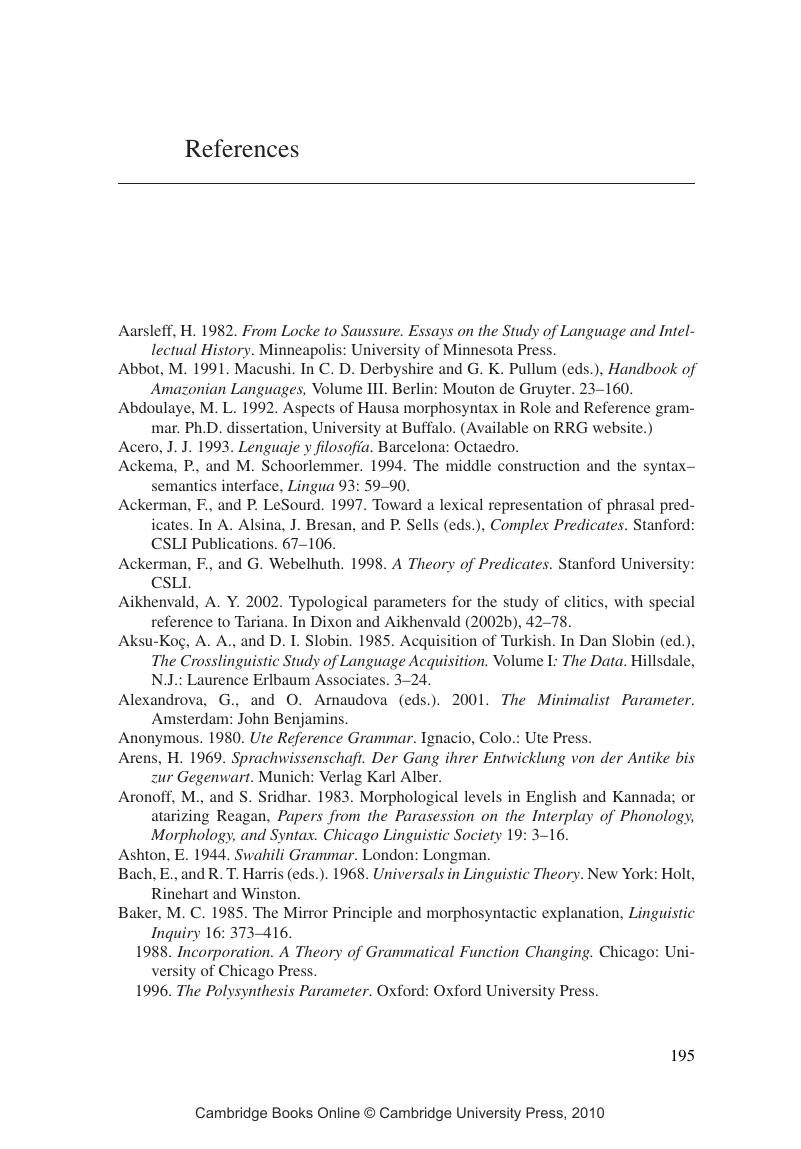Book contents
- Frontmatter
- Contents
- List of contributors
- Preface
- List of abbreviations
- 1 A first look at universals
- 2 Linguistic typology
- 3 Universals in a generative setting
- 4 In search of universals
- 5 Morphological universals
- 6 Syntactic typology
- 7 Some universals of Verb semantics
- 8 Language change and universals
- References
- Index
- References
References
Published online by Cambridge University Press: 08 January 2010
- Frontmatter
- Contents
- List of contributors
- Preface
- List of abbreviations
- 1 A first look at universals
- 2 Linguistic typology
- 3 Universals in a generative setting
- 4 In search of universals
- 5 Morphological universals
- 6 Syntactic typology
- 7 Some universals of Verb semantics
- 8 Language change and universals
- References
- Index
- References
Summary

- Type
- Chapter
- Information
- Linguistic Universals , pp. 195 - 212Publisher: Cambridge University PressPrint publication year: 2006

